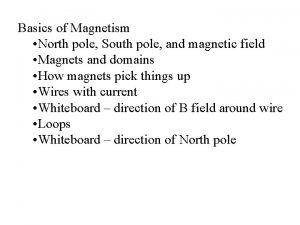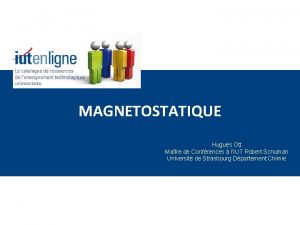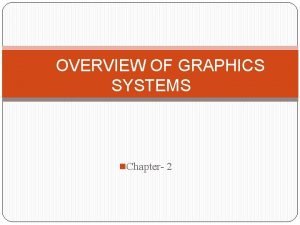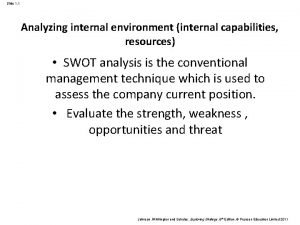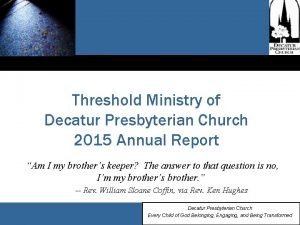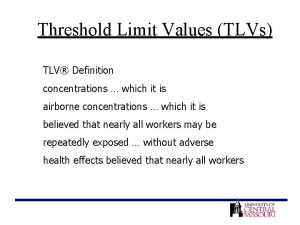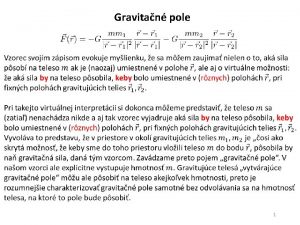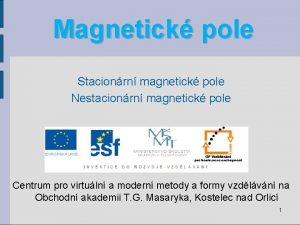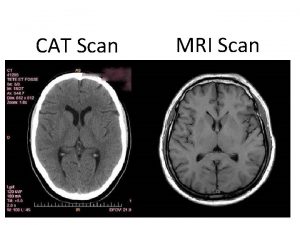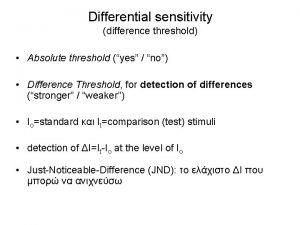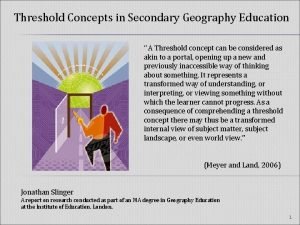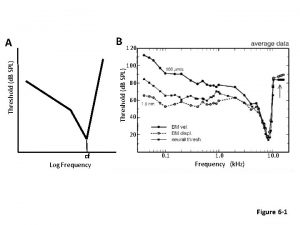WW Threshold scan runs and Z pole runs











- Slides: 11

WW Threshold scan runs and Z pole runs in CEPC Zhijun Liang IHEP, CAS 1

Introduction • Some discussion about CEPC Z pole running. – http: //indico. ihep. ac. cn/event/7709/ – Two possibility: • L=1. 6 X 1035 cm-2 s-1, solenoid field = 3 T • L=3. 2 X 1035 cm-2 s-1, solenoid field = 2 T • Two year running proposed by accelerator team • WW threshold scan – Proposal from accelerator team – One year running, Total luminosity 3. 2 ab-1 2

WW threshold scan Vs luminosity • • WW threshold scan need to scan 3~5 mass points – Especially need to cover 158. 5 Ge. V, 161. 2 Ge. V, 162. 4 Ge. V In CEPC Pre-CDR, we assume 0. 5 ab-1 for W threshold scan – W width measurement is totally limited by statistics – W mass measurement suffers a bit from statistics Assume we run one year WW threshold to collect 3. 2 ab-1 data. – W width measurement is still limited by statistics, but much better than pre-CDR If running for two years with 6. 4 fb-1 – W width measurement is not limited by statistics any more Observable Systematics L=0. 5 ab-1 (3 points scan, 0. 16 ab-1 per run) L=3. 2 ab-1 (3 points scan, 1 ab-1 per run) L=6. 4 ab-1 (3 points scan, 2 ab-1 per run) Major uncertainty Mw 2 Me. V 0. 8 Me. V 0. 6 Me. V E beam cali. ΔE < 1 Me. V GW 2 Me. V 6 Me. V 2. 4 Me. V 1. 7 Me. V Statistics 3

The parameters of CEPC Higgs Number of IPs Energy (Ge. V) Circumference (km) SR loss/turn (Ge. V) Half crossing angle (mrad) Piwinski angle Ne/bunch (1010) Bunch number (bunch spacing) Beam current (m. A) SR power /beam (MW) Bending radius (km) Momentum compaction (10 -5) IP x/y (m) Emittance x/y (nm) Transverse IP (um) x/ y/IP VRF (GV) f RF (MHz) (harmonic) Nature bunch length z (mm) Bunch length z (mm) HOM power/cavity (kw) Energy spread (%) 2. 58 15 2 80 100 0. 34 16. 5 7. 74 15 242 (0. 68 us) 1220 (0. 27 us) 17. 4 30 87. 9 30 10. 6 120 1. 73 0. 36/0. 0015 1. 21/0. 0031 20. 9/0. 068 0. 031/0. 109 2. 17 2. 72 3. 26 0. 54 (2 cell) 0. 1 Energy acceptance requirement (%) 1. 35 Energy acceptance by RF (%) Photon number due to beamstrahlung 2. 06 0. 29 Lifetime _simulation (min) 100 Lifetime (hour) F (hour glass) Lmax/IP (1034 cm-2 s-1) W 0. 67 (40 min) 0. 89 2. 93 1. 11 0. 36/0. 0015 0. 54/0. 0016 13. 9/0. 049 0. 013/0. 12 0. 47 650 (216816) 2. 98 6. 53 0. 87(2 cell) 0. 066 Z 45. 5 0. 036 23. 8 8. 0 12000 (25 ns+10%gap) 461 16. 5 0. 2/0. 0015 0. 17/0. 004 5. 9/0. 078 0. 0041/0. 056 0. 1 3 T 2 T 0. 2/0. 00 1 0. 17/0. 0015 2. 42 8. 5 1. 94(2 cell) 0. 038 1. 47 0. 44 1. 7 0. 55 2 0. 94 11. 5 4 0. 99 16. 6 32

Z pole electroweak physics Vs lumiosity • Assuming Z pole runs last for 180 days, Z cross section 60 nb • L=1 e 34, about 1010 Z Ø Ø Ø Observable Systematics L=1 e 34 (stat unc. ) 3 T, L=1. 6 e 35 (stat unc. ) L=3. 2 e 35 (stat unc. ) Key Mz. GZ 0. 5 Me. V 0. 2 Me. V 0. 05 Me. V 0. 035 Me. V E beam cali. ΔE < 500 ke. V R l =Gh/Gl 0. 01% 0. 0025% 0. 0018% Statistics Rb 0. 05% 0. 04% 0. 01% 0. 007% Statistics + small Rin ALR NA NA Beam polarization AFB lept. 0. 1% 0. 08% 0. 02% 0. 014% Forward acceptance From 1 e 34 to 1. 6 e 35 , large improvement in stat. uncertainty From 1. 6 e 35 to 3. 2 e 35 , improvement is not big From 3 T to 2 T, Momentum resolution degraded to 50%, higher Bk. G. (no major impact ) Key issue for Z pole physics, beam momentum systematics need to be smaller than 500 ke. V Beam polarization is needed for beam momentum measurement and ALR 5

backup 6

Cross section Vs W mass or W width • df 7

W mass stat uncertainty single energy point (500 fb-1) • df From Peixun and Gang 8

W width stat uncertainty single energy point (500 fb-1) • df width From Peixun and Gang 9

Start from detector solenoid 3. 0 T From Chenghui βy* Vs. coupling @ Z Limitation of the luminosity improvement by reducing the βy*

Start from detector solenoid 3. 0 T Coupling=1. 7% + 0. 3~0. 5% Large beam size & serious bunch lengthening Coupling Vs. Luminosity @ Z From Chenghui For the 2 Cell cavity operation, if the coupling lose control L L 0/2 ~ L 0/4
 Pole core and pole shoe
Pole core and pole shoe Define north pole and south pole
Define north pole and south pole Direct view storage tube in computer graphics
Direct view storage tube in computer graphics In raster scan display the frame buffer holds
In raster scan display the frame buffer holds Raster scan display and vector scan display
Raster scan display and vector scan display Aimant pole nord pole sud
Aimant pole nord pole sud The frame rate of a random scan architecture is 60-80 hz
The frame rate of a random scan architecture is 60-80 hz Threshold and distinctive capabilities
Threshold and distinctive capabilities Threshold and distinctive capabilities
Threshold and distinctive capabilities Threshold ministry
Threshold ministry Threshold limit value
Threshold limit value Threshold limit value
Threshold limit value

